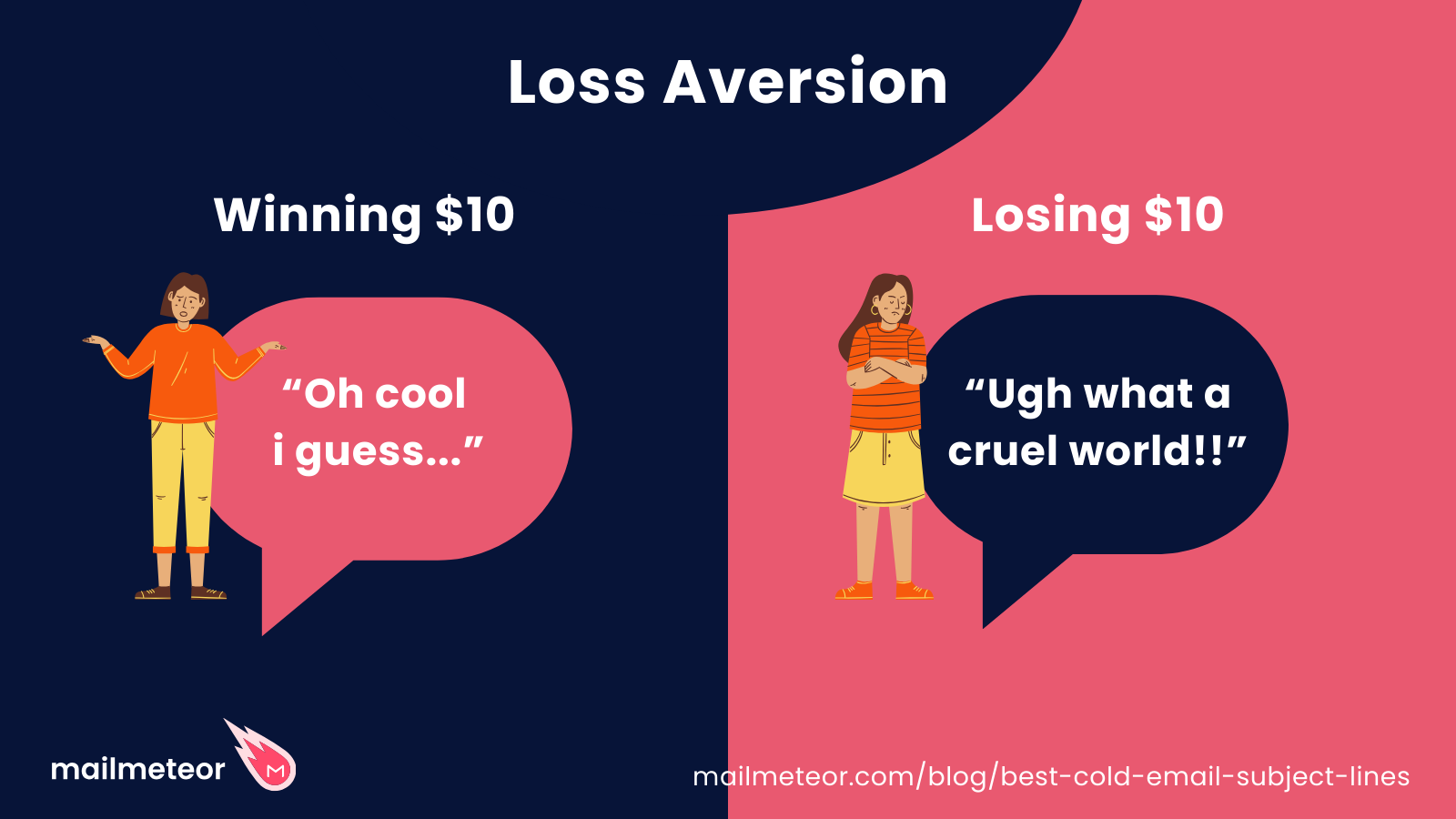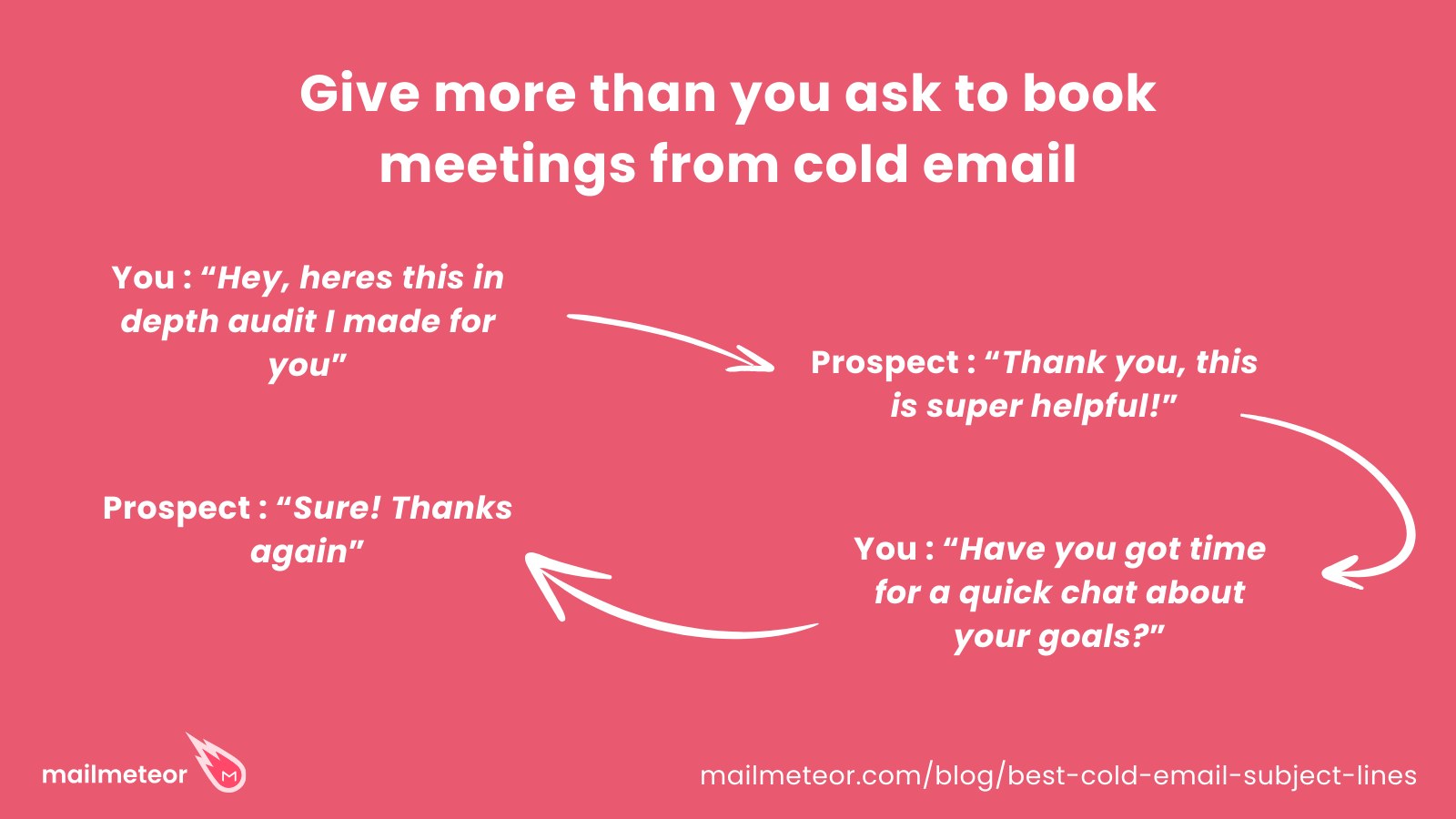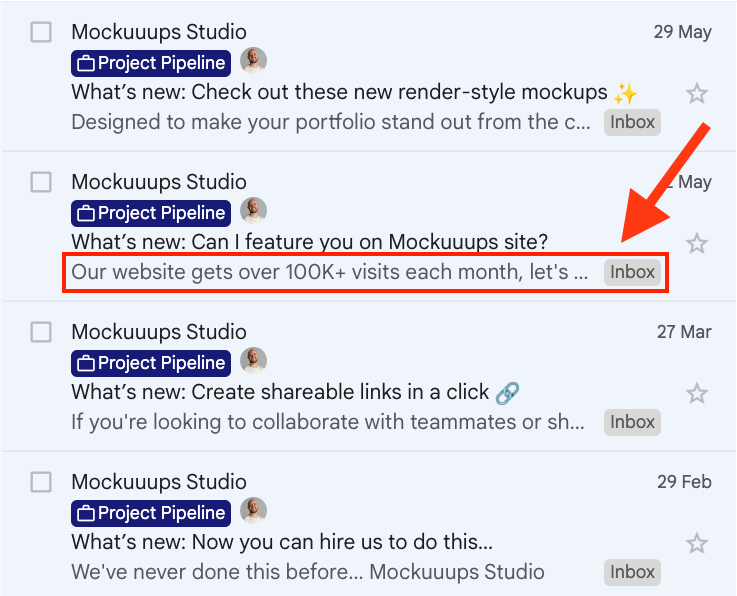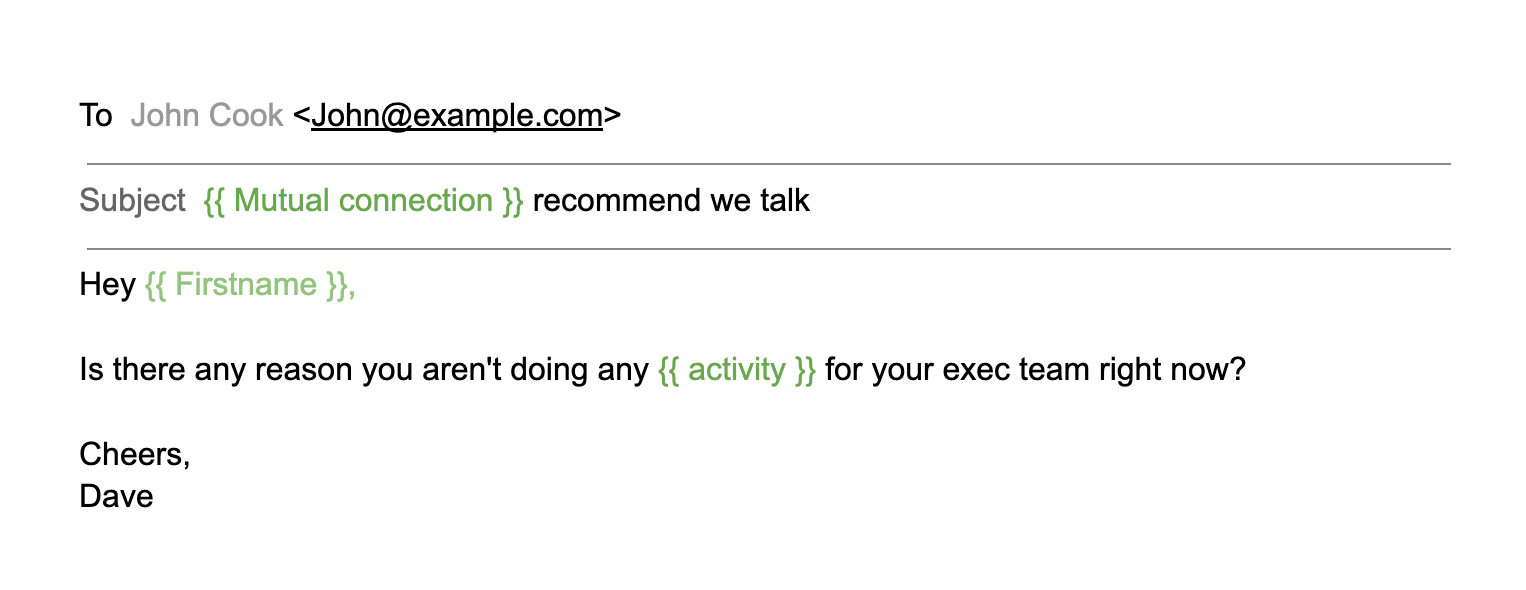Your cold email subject line is the first thing your prospect sees and determines whether they’ll open your email or hit delete. So it’s critical to get it right.
The trouble is, with AI outreach tools making it more and more easy to send mass cold emails, your prospects are likely bombarded with countless messages day in and day out.
In this article, I’ll walk you through the key elements that make up the best cold email subject lines, along with examples and tips to avoid getting marked as spam.
Let’s dive in.
The Best Cold Email Subject Lines Boil Down to Curiosity
Imagine you’re a CEO or business leader. You roll out of bed, make coffee, and check your inbox.
Like most people in B2B, you’re probably receiving 20+ cold emails a day. So, you begin your daily routine of deleting anything that doesn’t immediately catch your attention.
That’s what you’re up against.
While there are plenty of tactics (like adding someone’s name to the subject line—which we’ll cover shortly), a truly effective cold email subject line comes down to one thing:
It needs to stand out and avoid being dismissed as ‘just another cold email’
How?
By building curiosity in your subject line—something that suggests the email is relevant and worth opening because it likely includes something they care about.
This is where many people trip up. They try to create curiosity but fail to deliver on it inside the email, leading to bait-and-switch tactics.
To write the best cold email subject lines that work, you need to know your audience inside and out. Understand their pain points, desires, and goals so you can create genuine curiosity about something that matters to them—targeted curiosity.
In the following subject line examples, I’ll walk you through several ways to build that curiosity and stand out in your prospect’s inbox:
- Ask Questions – A question naturally sparks curiosity and gets them thinking.
- Personalization – Make them feel like you’ve done your research and know them.
- Pain Points – Address a pain point that’s relevant and important to them.
- Provide Value – Make them wonder, “What’s in it for me?”
Pro tip: These techniques don’t work in isolation—the best cold email pros use them together.
4 Ways to Craft Winning Cold Email Subject Lines
Ask Questions (That Create Curiosity)
When someone asks you a question, you can’t help but start thinking about the answer—especially when it’s related to something you care about.
Like a good movie trailer, it creates an ‘open loop’ in their mind that they have to open the email to close.
To make this work effectively, the best cold emailers know their prospect’s pain points, desires, hopes, and dreams inside out.
Examples:
-
“Your go-to [service]?”
Why this works: Pretend you’re an electrician looking for contract work. This subject line could be a great way to reach potential clients, prompting them to think about whether they need your service. -
“How do you stack against [competitor]?”
Why this works: This taps into your prospect’s competitive nature and pain of losing deals to their competitors. It’s especially effective in sales or marketing outreach. -
“Any reason you aren’t posting on IG right now?”
Why this works: Chances are your prospect wants to post to Instagram, and there’s a reason they aren’t. This creates a great conversation starter without a hard pitch.
Personalized Cold Email Subject Lines
Personalization goes beyond just adding someone’s name in the subject line. Strong personalization makes the recipient feel you’ve done your homework and know them, so it doesn’t feel like a typical cold email—it grabs attention.
Examples:
-
“I know you love [what you found personal about them]”
Why this works: This makes it clear that you’ve taken the time to understand their interests. It’s not generic outreach but feels specifically crafted for them. -
“I’ve been following your journey since [event]”
Why this works: Referencing a specific event or moment in their journey shows you’ve paid attention, signaling that this email is a continuation of genuine interest. -
“Saw your blog post on [topic]…”
Why this works: Mentioning something specific they’ve published shows you’ve invested time in their content. This increases the likelihood that they’ll engage with what you have to say. -
“What was your biggest takeaway from [event]?”
Why this works: This creates a sense of connection by referencing an event the prospect attended. It opens the door to a conversation, making it feel like a two-way exchange. -
“Is [topic] still top of mind, [Name]?”
Why this works: Refers to something they’ve expressed interest in, keeping the email relevant and tailored. -
“Did you enjoy [event], [Name]?”
Why this works: This casual yet personal subject line invites a response without feeling pushy, showing you’ve paid attention to their recent activities. -
“I’ve heard great things about your work in [field]”
Why this works: This taps into their reputation, ego, or expertise, increasing the chance of a positive reaction.
Pain Point-Driven Cold Email Subject Lines

Humans are generally motivated by two forces: the desire to avoid pain and the pursuit of pleasure. However, we are much more driven to avoid pain than to seek out pleasure.
That’s why addressing a prospect’s pain point and hinting that you have a solution in your subject line is a powerful way to grab their attention.
Examples:
-
“Need help with [problem]?”
Why this works: This subject line hits directly on the prospect’s pain point and invites a conversation about solving it. It prompts them to consider whether they need external help to resolve it. -
“Do this to never [undesirable thing] again”
Why this works: This taps into loss aversion, one of the most powerful psychological motivators. People are more motivated to avoid negative outcomes, so this subject line builds curiosity around preventing a problem. -
“Tired of dealing with [problem]? Here’s a better way”
Why this works: This balances empathy and curiosity. It acknowledges their frustration while suggesting a simple fix, motivating them to find out more.
Value-Based Cold Email Subject Lines

Offering value upfront encourages the recipient to open your email to see what’s in it for them. Whether it’s free advice, helpful tips, or a solution to a problem, a value-driven cold email strategy fosters reciprocity.
When you provide something useful, people are more likely to reciprocate, making them more inclined to engage with you.
Examples:
-
“2 ways to get more sign-ups”
Why this works: This offers a tangible benefit (increased sign-ups) with a simple, actionable promise. It speaks directly to a common business need, making it hard to ignore. -
“2 content ideas for you”
Why this works: Offering specific content ideas without an immediate ask provides clear value. It opens the door for a deeper conversation, as the recipient will want to hear those ideas. -
“I reckon you could get more sign-ups if you did this.”
Why this works: This subject line promises a quick win—more sign-ups—while eliminating the fear of additional costs. It appeals to businesses looking for growth on a budget.
3 Key Things to Keep in Mind to Make Your Subject Lines Even Stronger
1. Use Email Preview Text to Bolster Your Subject Line
The email preview text is an underutilized asset. When your recipients see your email, they also get a sneak peek of the first few lines below the subject line. Use this text to add a second hook or reinforce the curiosity built by your subject line.

2. Test Your Subject Lines Before Sending
Nothing beats market feedback on your cold email subject lines. But if you want to get a quick sense of whether your subject line is likely to perform, use our free subject line tester to check your email for length, spam-trigger words, and more to avoid costly mistakes here.
3. Leverage Dynamic Personalization
The more you personalize, the more you increase the likelihood of getting a response.
The trouble is, when you’re sending cold emails to hundreds or thousands of people, it’s hard to make recipients feel as if your email was written just for them.
With tools like Mailmeteor, you can easily add personalized fields like names, company details, or specific pain points that speak directly to your recipient inside your subject line as well as the email itself.

What You Should Do Now
The cold email examples in this guide are a great starting point, but what resonates with your audience will be unique to your industry and prospects.
If there’s one takeaway from this post, it’s that creating curiosity with implied value in your subject line is key to crafting the best cold email subject lines that don’t end up in the junk folder with the rest of the cold emails your prospect is receiving.
Use tools like Mailmeteor to A/B test subject lines and track open rates and replies. The more you test, the more you’ll learn what works.
FAQs
What subject line gets the most opens?
The subject lines that get the most opens are those that resonate with your prospect or spark their curiosity because you have alluded to something they care about. The best cold email subject lines rely on you knowing the pain points, desires, hopes, and dreams of your prospects.
Using personalization to stand out from your regular cold emails is also a great way to increase your chances of getting read.
How long should cold email subject lines be?
Generally speaking, subject lines should be under 9 words to ensure they fit in the email preview of your recipient’s inbox. However, 7 words or less is optimum.
Why? Because the human brain’s working memory can typically hold around seven items, plus or minus two, at any given time. This is known as the “magical number seven” or Miller’s Law.
But I wouldn’t get tripped up on optimizing for things like word length—I’d spend more time thinking about how you can cut super deep with the pain points of your recipients.
What makes a bad or spammy subject line?
Trying to optimize for people opening your email can lead you down the path of using ‘bait and switch’ tactics where you over-promise in your subject lines or do shady things to grab their attention that have nothing to do with the contents of your email.
This is a surefire way to get marked as spam, permanently harming your email reputation—meaning future emails you send from that email address will likely go to spam.


